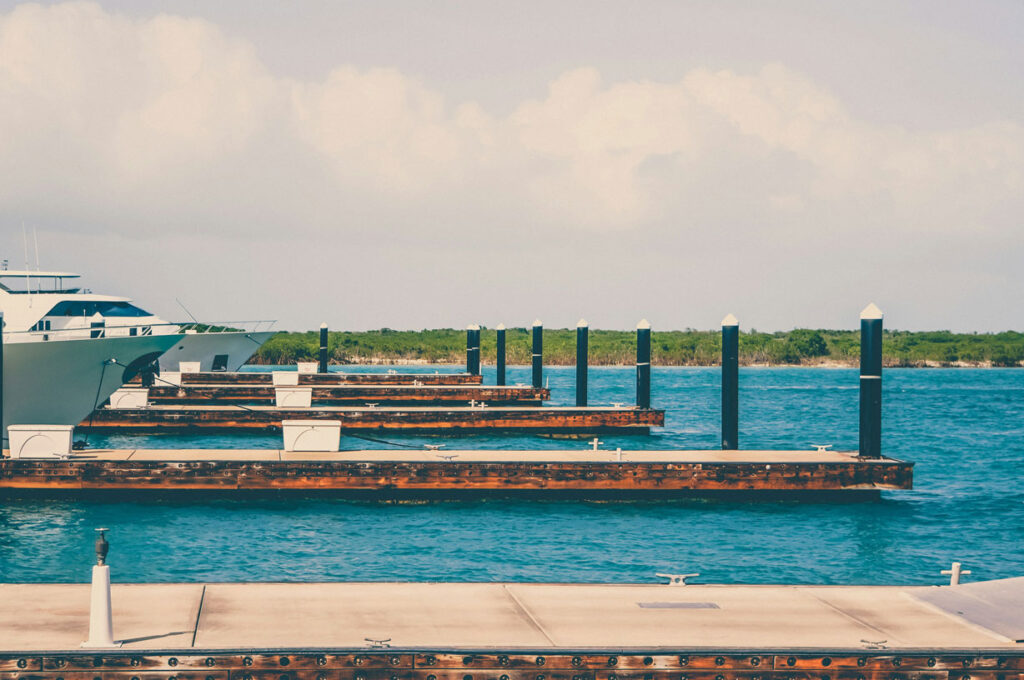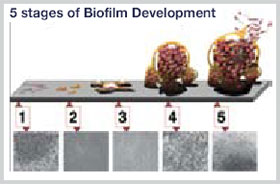
Marine fouling and biofouling or bio-layer is a slimy layer that can form at all depths and temperatures and is commonly found on the hull of a ship, semi-submersible and jack up which will lead to their corrosion. Biofouling is especially economically significant on vessel hulls, where high levels of fouling can increase drag, reducing the overall hydrodynamic performance of the vessel and increasing the fuel consumption by 30% in order to maintain a given level of performance. This has economic and environmental consequences, as increased fuel consumption leads to increased output of greenhouse gases. Economic losses are large as fuel accounts for up to 50% of marine transportation costs. Biofouling occurs worldwide from offshore oil and gas and wind farm structures in European waters to hulls of ships, semi-submersibles and jack ups trading in the Middle East and Mediterranean where the problem is more serious in tropical waters.
Biofouling is everywhere and other parts of a ship, semi-submersible, jack up, fixed offshore structure other than the foundation or hull are also affected i.e. emergency fire pump suctions, windmill/fixed platform access ladders, heat exchangers, water-cooling pipes, propellers and ballast water tanks. Biofouling is also found in power stations intakes and on offshore structures such as wind farm foundations known as monopoles or jackets. In doing so the structural strength of the foundations are subject to an increase at the design stage.
Biofouling is not as simple a process as it sounds. Organisms do not usually simply suck onto a substrate. The complex process often begins with the production of a biofilm.
This biofilm mainly consists of slime-producing bacteria such as Thiobacilli or other micro-organisms that forms on a material when conditions are right. Biofilms do not have to contain living material; they may instead contain dead bacteria and/or secretions. The growth of a biofilm can progress to a point where it provides a foundation for the growth of seaweed, barnacles, and other organisms. They use this biofilm similar to an incubator. This is a process that constantly repeats itself, meaning that high concentrations of micro-organisms can be present in the affected water after a period of time. In other words, micro-organisms such as bacteria and algae form the primary slime film to which the macro-organisms such as mollusks and barnacles attach. If this biofilm is eliminated from the water, it becomes impossible for micro-organisms to reproduce.
Biofilm is characterised by 5 stages of growth:
- Stage 1 initial attachment
- Stage 2 irreversible attachment
- Stage 3 Growth I
- Stage 4 Growth II
- Stage 5 Outbreak

Barnacles (a type of marine crustacean), encrusting bryozoans, mollusks and zebra mussels create a type of fouling known as calcareous (hard) fouling, while organisms such as algae and slimes make up non-calcareous (soft) fouling.
Many factors contribute to an organisms settlement on a substrate. The settlement of the biofilm created by Pseudomonas fluorescens can be determined by flow of water; maximum development occurs around 1 m/sec. Zebra mussels (Dreissena polymorpha) and water flow velocity have been studied – settlement of the mussels does not occur at velocities greater than 2m/sec. Barnacles will actually detach )from a silicone surface, like and antifouling coating) at 10-15 knots (-5.1 -7.7 m/sec) but most effectively detach at 30knots (-15 m/sec). Turbulence and speed also help to detach seaweed and kelp from substrates. Where organisms reside and thrive – quiet waters, flowing waters or the tidal zone- is another important consideration.
One of the earliest methods of solving the problem was simply to scrape the hulls of ships. This solution, although simple and relatively effective, poses one not so obvious major problem spread of invasive species. This is illustrated best with the population explosion of zebra mussels (Dreissena polymorpha) in the Great Lakes region. The mussels are picked up by fishing equipment, ships and other vessels and transported to non-native waters where they wreak havoc on native environments. To counter the spread of invasive species, many areas have established hull-cleaning laws that state that any material removed from a hull must be collected and disposed of properly.
When cleaning (or scraping) becomes time consuming or ineffective, industries turned to the most widely accepted method of controlling and preventing biofouling – antifouling coatings. When a substrate (e.g. a ships hull) is in motion, the water wears the compound away, leaving behind particles. Tin and Copper coatings are highly effective in reducing/controlling biofouling; however, they are also highly toxic to marine organisms and a worldwide ban to prohibit the use of these coatings was enforced in 2008.
With the solution of one problem, another arises: how to replace TBT/copper coatings.
Ship Hull Design
From fuel efficiency to stability, we optimize your vessel for unrivaled performance, tailoring every curve and contour to meet your specific operational needs.
Tubular Piling Structure Design
Our expertise in material selection, load analysis, and advanced fabrication techniques ensures each tubular piling stands tall, a silent sentinel guarding your critical infrastructure.
MGPS Design
We craft intelligent MGPS systems, wielding the power of copper ions and hydrosonic technology to gently, yet effectively, banish barnacles and their slimy brethren.
Subsea Structure Design
We engineer structures that stand tall in the crushing depths, their every curve and contour meticulously crafted to withstand the ocean's wrath.
Sheet Piling Structure Design
We are armed with advanced software and a deep understanding of soil mechanics, sculpt structures that hold their ground against the most demanding environments.
Ship Tank Design
Our expert designers, wielding advanced simulation software and a deep understanding of cargo behavior, sculpt tanks that maximize capacity, minimize slosh, and optimize flow.
